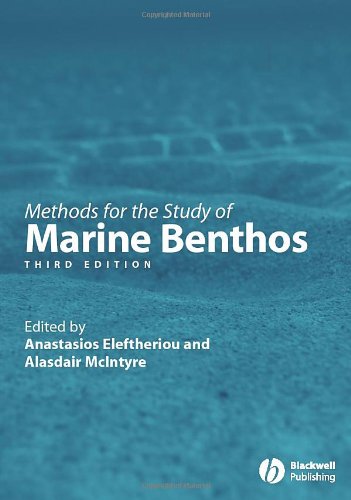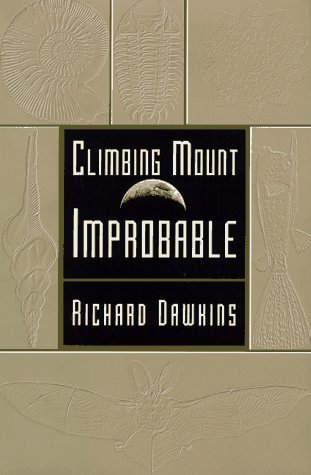Anastasios Elefteriou, Alasdair McIntyre0632054883, 9780632054886
Table of contents :
METHODS FOR THE STUDY OF MARINE BENTHOS……Page 5
Contents……Page 7
Contributors……Page 15
Dedication……Page 17
Preface to the Third Edition……Page 18
Preface to the Second Edition……Page 20
Preface to the First Edition……Page 22
1.1 Introduction……Page 25
1.2 Variability in benthic populations……Page 26
Appropriate spatial replication……Page 29
Appropriate temporal replication……Page 32
1.4 Size of sampling unit……Page 34
1.5 Independence in sampling……Page 38
1.6 Multivariate measures of assemblages……Page 39
1.7 Transformations and scales of measurement……Page 42
1.8 Data-checking and quality control……Page 45
1.9 Detecting environmental impacts as statistical interactions……Page 47
1.10 Precautionary principles and errors in interpretations……Page 51
1.11 Precision and size of samples……Page 53
1.12 Gradients and hierarchies in sampling……Page 55
1.13 Combining results from different places or times……Page 59
1.14 Conclusions……Page 61
2.1 Introduction……Page 67
Sampling and storage……Page 68
2.2 Particle (grain) size analysis……Page 70
Grade scales……Page 71
Rapid partial analysis of silt (or mud) content……Page 72
Method for silt content – dry sediment……Page 73
Method for gravimetry……Page 74
Analysis of the silt–clay fraction……Page 75
Aggregation status……Page 76
Electro-resistance particle counters……Page 77
Laser diffraction particle sizing……Page 78
Sub-sampling of sediments……Page 79
Image analysis……Page 80
Ternary diagrams……Page 81
Cumulative frequency curves and distribution statistics……Page 83
Statistical parameterisation of particle size data……Page 85
Bulk and dry density, water content, porosity and permeability……Page 87
High temperature oxidation (elemental analysers)……Page 90
Loss on ignition (LOI)……Page 91
Chlorophyll……Page 92
EPS carbohydrate……Page 93
In situ sediment characterisation methods……Page 94
Background……Page 95
Low grazing angle swathe systems (sidescan sonar)……Page 96
Single beam echo-sounders (AGDS)……Page 101
Multi-beam echo-sounders (MBES)……Page 103
Commercial suppliers – Disclaimer……Page 105
3.1 Introduction……Page 111
Sidescan sonar……Page 113
Underwater video camera systems……Page 114
Housings……Page 116
Data transmission……Page 117
Storage media……Page 118
Power supply……Page 119
3.4 Photography……Page 120
Illumination……Page 121
Calibration and measurement……Page 122
Diving……Page 123
Specialized towed platforms……Page 124
Remotely operated vehicles……Page 126
Autonomous underwater vehicles……Page 128
Navigation and positioning of the carrier platform……Page 129
Sediment profile imagery……Page 130
Application of medical technologies……Page 131
3.7 Laboratory imaging……Page 132
3.8 Image analysis……Page 133
Remotely supplied systems……Page 136
Hookah systems……Page 137
Heliox and trimix……Page 138
Open-circuit SCUBA……Page 139
Oxygen rebreathers……Page 140
Use of rebreathers……Page 141
4.2 Saturation diving and underwater habitats……Page 142
Audio recording……Page 144
Still photography……Page 146
Submersible film cameras……Page 147
Housed 35 mm SLR camera systems……Page 148
Photo-monitoring techniques……Page 149
Stereo-photography……Page 152
Video systems……Page 154
General considerations……Page 157
Air drills and underwater fasteners……Page 158
Acoustic pingers and receivers……Page 159
Suction samplers……Page 160
Resin casting……Page 164
Manta tows……Page 165
Transect surveys……Page 166
Quadrats……Page 170
Rapid assessment protocol techniques……Page 171
MNCR methodology……Page 172
Fish survey techniques……Page 173
Belt transect……Page 174
Stationary technique……Page 175
5.1 Littoral observation and collection……Page 184
Position fixing and levelling on the shore……Page 187
5.2 Remote collection……Page 189
Trawls……Page 190
Bottom sledges……Page 191
Dredges……Page 193
Semi-quantitative estimates with trawl and dredge……Page 197
Anchor dredges……Page 198
Grabs……Page 199
Box samplers and corers……Page 206
Suction samplers……Page 208
Other methods of sampling……Page 211
Continental shelf……Page 212
Recovery of lost gear……Page 213
Dredges and trawls……Page 215
Performance……Page 216
Efficiency of capture……Page 218
Corers……Page 219
5.5 Choice of a sampler……Page 220
Initial treatment……Page 225
Preservation……Page 231
Subsequent sorting……Page 232
5.7 Data recording……Page 233
6.1 Introduction……Page 253
Quantitative sampling……Page 254
Qualitative sampling……Page 257
Quantitative sampling……Page 258
Quantitative sampling……Page 261
6.3 Fixation and preservation……Page 262
Preserved material……Page 265
Live material: coarse sediment……Page 268
Secondary substrata……Page 269
6.6 Sample splitting……Page 270
Sorting……Page 271
Preparation for microscopy……Page 272
6.8 Biomass determination……Page 274
6.10 Energy flow measurements……Page 276
Direct observations of ingestion……Page 277
Measurement of (decreases in) food concentration……Page 278
Tracer techniques……Page 280
6.11 Production……Page 283
P/B based production estimates……Page 284
Excretion and defaecation……Page 286
6.13 Experimental techniques……Page 287
Characteristics of deep-sea sampling gear……Page 297
Deploying sampling gear on wire ropes……Page 298
Use of acoustic and other telemetry systems……Page 300
Trawls……Page 303
Epibenthic sleds……Page 306
Comparisons between sledge and trawl samplers……Page 310
Naturalist’s dredge……Page 311
Anchor dredges……Page 312
Grabs……Page 314
Box corers……Page 315
Tube corers……Page 323
Sediment samples……Page 326
Traps……Page 327
Other sampling methods……Page 328
7.4 Sampling from manned submersibles and remote operated vehicles (ROVs)……Page 329
Deep-diving manned submersibles……Page 330
Remote operated vehicles (ROVs)……Page 332
Autonomous underwater vehicles (AUVs)……Page 333
Sampling using submersibles and ROVs……Page 334
Benthic landers……Page 336
Sample washing and sieving……Page 338
Choice of sieve size……Page 340
Further processing, fixation and preservation of samples……Page 343
8.1 Introduction……Page 350
State variables and units of measurement……Page 351
8.2 Energy and mass budgets of individual organisms……Page 352
The kappa-rule DEB model……Page 354
Biomass……Page 355
Body size and size–mass relationships……Page 358
Specific chemical components: organic carbon, organic nitrogen and ATP……Page 360
Ingestion and absorption by deposit feeders……Page 361
Ingestion and absorption by predators……Page 365
Clearance and pumping rates of filter feeders……Page 367
Urine products……Page 373
Mucus……Page 376
Respiration……Page 377
Oxygen consumption……Page 378
Carbon dioxide production……Page 380
Calorimetry……Page 381
Growth……Page 382
Laboratory methods……Page 383
Regeneration……Page 384
8.4 From the individual to the population……Page 385
Secondary production of a population of animals……Page 386
Calculation of production of populations with identifiable cohorts……Page 387
Calculation of production when cohorts cannot
be identified……Page 390
Production to biomass ratios and the turnover of individuals……Page 394
Estimation of demographic parameters from size- or stage-structured field data: Introduction and principles……Page 395
Simple mode progression models……Page 400
Mode progression with parametric growth curve……Page 402
Populations with continuous recruitment……Page 403
Models using full or partial explicit dynamic equations……Page 404
8.5 From populations to communities……Page 405
Food web in mass balances……Page 406
Inverse analysis……Page 408
Dynamical modelling……Page 410
Input–output analysis……Page 411
Topological analysis……Page 412
Conclusions……Page 413
Index……Page 433







Reviews
There are no reviews yet.